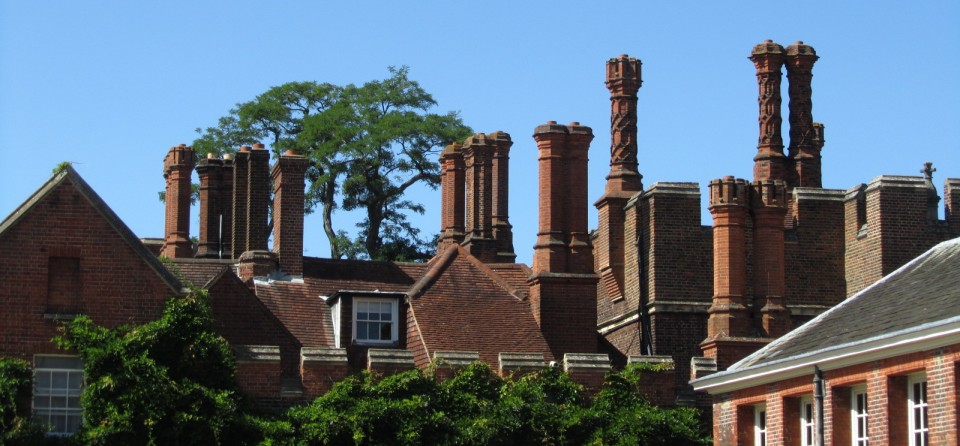A number of portraits of Isaac Newton have survived up to our day. Yet, we do not know how exactly the famous polymath looked like. After all, in each portrait his appearance was adjusted to correspond with the messages which Newton himself and those who commissioned the portraits wished to convey. There was nothing extraordinary in this. On the contrary, a defining feature of the portraiture of the famous was – and had been already for centuries – that they were manipulated. The aim of such portraits was to accentuate and enhance the sitters’ virtuosity and power. This was obvious to everyone who was involved in the production and consumption of portraitures. Against this background, it has been astonishing to follow the outrage which the photoshopping of the Mother’s Day portrait of the Princess of Wales has caused all over the world. Surely, the quality of the photoshopping was clumsy and the events leading to the publication of the doctored photograph – the surgery of the Princess and her long absence from public duties – played their role in the public’s response. But this does not change the fact that the audience seemed to expect royal photographs to be genuine and unmediated. Such a profound trust in the authenticity of publicly circulated imagery produced by a royal family should make us all pause in this era of false news and AI generated images.
Ludmilla Jordanova, writing about scientific and medical portraits between 1660 and 2000, emphasizes how the relationship between artists, sitters, audiences, commissioners, and the prevailing aesthetic ideals have shaped how the famous have been immortalized on canvas. The overarching idea in such portraiture has been that portraits should be carefully constructed expressions of identity, status, profession, and personal taste. Lucy Aiken reported already in 1818 in the Memoirs of the Court of Queen Elizabeth that the state papers revealed how Elizabeth had been upset about some of the “ill-favored” likeness of her countenance which circulated among her subjects. Consequently, a royal prerogative was issued to correct the situation: only the approved patterns of the queen’s image could be used to make portraits of her, Aikin explained. Hence, as Elizabeth’s maneuvering with her portraiture suggests, portraits should not be taken as authentic reproductions of likeness or read literally as historical documents. However, this does not mean that portraits do not have any value as historical sources. On the contrary, they can tell us how the contemporaries thought that a ruler, scientist, wealthy merchant, or another renown member of the society should look like to fill his public role. Moreover, as Patricia Fara observes, portraits can be “instructive not just because of what they do show, but also because they are imbued with assumption of what should be shown or concealed.”
What is more, portraits are intriguing reflections of the shifting aesthetic ideals. Godfrey Kneller’s Isaac Newton (1689) provided a model for a visual expression of a savant. The contemporaries interpreted Newton’s thin, pale face, disheveled hair, and fine, fragile fingers as signs of melancholy, but the Romantics understood them as external markers of genius. As realism gradually emerged as the leading aesthetic ideal during the nineteenth century, the notion of “likeness” gained popularity in portraits. Artists aimed at realism, and this meant that the youthful skeleton-like geniuses were replaced with aging scientists, scholars, politicians, and other renown figures whose wrinkles communicated wisdom gained through experience and thorough learning. Blemishes, age, or illnesses were no longer hidden; sitters carried such marks with fortitude.
For a moment, the invention of photography enhanced the impression of authenticity in portraiture as photography was linked from the outset to documenting and observing scientific evidence. However, it did not take long before sitters began to embrace the possibilities of what is today known photoshopping. According to Raymond Blathwhyt’s article “How Celebrities Have Been Photographed” in The Windsor Magazine in 1895, the famous were keen to have their portraits taken, but they could be sensitive about what they considered weaknesses in their physiognomy. Robert Browning, for example, gave to the renowned photographer Julia Cameron specific instructions how to improve his appearance in one of the photographs she had taken of him. Blathwhyt quoted a letter from Browning to Cameron where the poet asked the photographer to render “a certain twist” of his nose “less prominent” by toning down its thickness.

Browning’s request bears witness to the sitters’ vanity, sensitivity about their looks, and to the significance which celebrities and other eminent individuals placed on the art of portraiture. They were aware that their images would be reproduced in the popular media and that the audience would draw inferences about their inner virtuosity based on their physical features. Therefore, the curation of photographic images was critical for the fashioning of public selves. Certainly, not much has changed since the days when Browning wished Cameron to modify “the deeper lines” of his face. Yet, when the Royal household is exposed as photoshoppers in the 2020s, the whole idea of manipulated portraiture seems to appear to the public as unprecedented, shocking, reprehensible, and something that must be fiercely objected.
Sources
Aikin, Lucy. Memoirs of the Court of Queen Elizabeth, vol. 1. London: Longman, Hurst, Rees, Orme, and Brown, 1818.
Blathwayt, Raymond. “How Celebrities Have Been Photographed,” vol. 2, 1895, 639–648, of photoshopping pp. 645–646.
*
Fara, Patricia. “Framing the Evidence: Scientific Biography and Portraiture.” In The History and Poetics of Scientific Biography, edited by Thomas Söderqvist, 71–91. Aldershot: Ashgate, 2007.
Jordanova, Ludmilla. Defining Features: Scientific and Medical Portraits 1660–2000. London: The National Portrait Gallery and Reaktion Books, 2000.



























